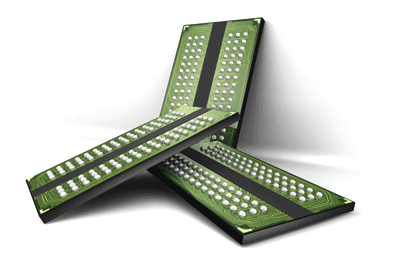Faster RAM results in more realistic images
BY BILL RANDOLPH
Director of Business Development
Micron Technology
www.micron.com/products/graphics-and-consumer
Not long ago, gaming was a niche industry, focused on hardcore devotees using specialized PCs. With the introduction of the first game consoles, the market expanded to a larger audience but remained rather limited.
With subsequent generations of game consoles such as Xbox 360, Playstation 3, and especially the Wii, the gaming community exploded to include all segments of society and became a significant part of the home entertainment experience. Today, with the proliferation of smartphones, tablets, and so forth, gaming has broken its connection to the living room and is enjoyed everywhere. Gaming is here to stay.
Throughout this gaming evolution, memory — and specifically DRAM — has played a fundamental role. Realism on a screen is not magic; it is achieved via complex mathematical computations performed by sophisticated GPUs reading and writing data to and from DRAM. The faster these transfers occur, the better and more realistic the image that is displayed on the screen. As GPU performance continues to increase with each new generation, DRAM bandwidth remains a key factor.
Discrete graphic card (GPU+DRAM) performance improvements are required to provide differentiated graphics performance. As screen resolutions improve and transition from HD to ultra-HD, the amount of data required to support and update the images on the screen must dramatically increase.
As a result, high bandwidth to and from the DRAM continues to be the number one priority for DRAM in graphics systems. Today, this is accomplished with specialty graphics DRAM, GDDR5 x32 (5,000 to 6,000 Mbits/s), and graphics DDR3 x16 (1,800 to 2,000 Mbits/s). For tablets and handheld game consoles, low-power DRAM (LPDRAM) is typically used, due to the limited power budget.

Micron supplies high-speed graphics DDR3 x16 for discrete graphics cards and supplies both DDR3 and LPDDR devices for low power tablets and laptops. Going forward, several graphics memory options will be available from various suppliers; however, high-bandwidth requirements will continue to be the focus.
DDR3 will run out of steam in the 2,133-Mbit/s range, and DDR4 will be the logical successor. DDR4, running at 2,400 to 3,200 Mbits/s, provides the performance and reduced power consumption required for some segments. GDDR5 and the lower-cost lower-performance GDDR5M option can satisfy the middle and upper performance ranges.
These devices operate at speeds starting at 2,800 to 3,200 Mbits/s (GDDR5M) and extending to more than 7,000 Mbits/s (GDDR5). They will be used in the pure performance segments of the gaming PC market.
Finally, for the extreme graphic extensive applications, new DRAM solutions are already under discussion. Ultimately, these solutions will be based on the emerging 2.5D/3D technologies, utilizing through-silicon vias (TSVs) and interposers made from materials such as silicon.
These devices are some years down the road, but will fundamentally alter the performance/power equation. In the mobile area, LPDDR will continue to increase performance with each new generation. These devices are well-suited to tablets and handheld games, where power consumption is a higher priority than performance. ■
Advertisement
Learn more about Micron Technology





